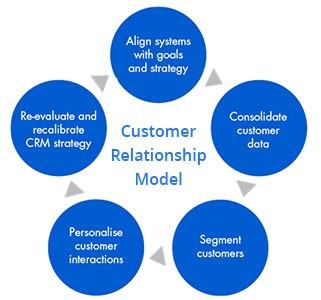In today’s competitive business landscape, gaining an edge over competitors is crucial for long-term success. While various strategies can contribute to achieving this advantage, marketing plays a pivotal role.
Effective marketing not only helps businesses reach their target audience but also allows them to differentiate themselves from competitors.
In this blog post, we will explore how businesses can leverage marketing to gain a competitive advantage, focusing on four key aspects: understanding the target audience, developing a unique value proposition, utilising innovative marketing channels, and building strong customer relationships.
What is Competitive Advantage?
Competitive advantage refers to the unique set of attributes, strategies, or resources that enable a business to outperform its competitors and achieve superior performance in the marketplace. It is the distinctive edge that allows a company to deliver greater value to customers, differentiate its offerings, and ultimately gain a larger market share.
Competitive advantage can stem from various factors, including product innovation, superior quality, operational efficiency, customer service excellence, strong brand reputation, cost leadership, or exclusive access to resources. By leveraging these advantages, businesses can position themselves ahead of competitors, attract customers, and sustain long-term profitability and growth.
Why Gain a Competitive Advantage?
Gaining a competitive advantage is vital for businesses in today’s dynamic and cutthroat marketplace. In a world where consumers have an abundance of choices, standing out from the competition is paramount to success.
A competitor advantage allows businesses to differentiate themselves by offering unique products, services, or experiences that resonate with customers. It provides an opportunity to capture a larger market share, increase profitability, and establish a strong position in the industry.
Furthermore, a competitive edge enables businesses to weather market fluctuations and navigate challenges more effectively. It instils confidence in stakeholders, attracts top talent, and fosters long-term growth. By gaining a competitive advantage, businesses can position themselves as industry leaders, driving innovation, and securing their position in the hearts and minds of customers.

Beginning with Understanding the Target Audience
To gain a competitive advantage, businesses must have a deep understanding of their target audience. This knowledge enables marketers to tailor their marketing strategies and messages to resonate with customers. Several methods can be employed to understand the target audience:
Market Research
Conduct comprehensive market research to gather insights about consumer preferences, behaviours, and needs. Analyse data, conduct surveys, and monitor social media discussions to gain a comprehensive understanding.
Buyer Personas
Develop detailed buyer personas that encapsulate the characteristics, goals, challenges, and motivations of the target audience. This helps in creating personalised marketing campaigns that speak directly to their needs.
Developing a Unique Value Proposition
A unique value proposition (UVP) is a critical component of gaining a competitive advantage. It communicates the distinct benefits and advantages that set a business apart from its competitors.
Here’s how to develop a compelling UVP:
Identify Unique Features
Identify what makes the product or service unique and highlight these differentiating features. This could be exceptional quality, innovative technology, superior customer service, or a combination of factors.
Solve Customer Pain Points
Understand the challenges customers face and position the product or service as a solution. Addressing pain points effectively demonstrates value and creates a competitive advantage.
Utilising Innovative Marketing Channels
To gain a competitive edge, businesses must leverage innovative marketing channels that align with their target audience’s preferences. Here are a few channels that can help businesses stand out from the competition:
Social Media Marketing
Utilise social media platforms to engage with customers, share valuable content, and build a community. Identify the most relevant platforms for the target audience and create a consistent and engaging social media presence.
Influencer Marketing
Collaborate with influencers who have a strong following among the target audience. This form of marketing can increase brand visibility, credibility, and trust.
Content Marketing
Create high-quality content that educates, entertains, and engages the target audience. Develop a content strategy that encompasses blog posts, videos, infographics, and podcasts to capture the attention of potential customers.
Building Strong Customer Relationships
Building strong relationships with customers is essential for gaining a competitive advantage. Loyal customers are more likely to choose a business over its competitors. Here’s how to foster customer relationships:

Personalised Communication
Tailor marketing messages and communication to make customers feel valued and understood. Utilise customer data to personalise emails, offers, and recommendations.
Exceptional Customer Service
Provide outstanding customer service to ensure positive experiences and build trust. Respond promptly to queries and resolve issues efficiently to leave a lasting impression.
Loyalty Programs
Implement loyalty programs that reward customers for their repeat business. Offer exclusive discounts, personalised offers, or early access to new products to incentivize loyalty.
Conclusion
In the fiercely competitive business landscape, gaining a competitive advantage is essential for sustainable growth.
By leveraging marketing strategies effectively, businesses can differentiate themselves, reach their target audience, and build strong customer relationships. Understanding the target audience, developing a unique value proposition, utilising innovative marketing channels, and fostering customer relationships are key steps in gaining a competitive edge.
By adopting these practices, businesses can position themselves as industry leaders and thrive in the ever-evolving marketplace.










